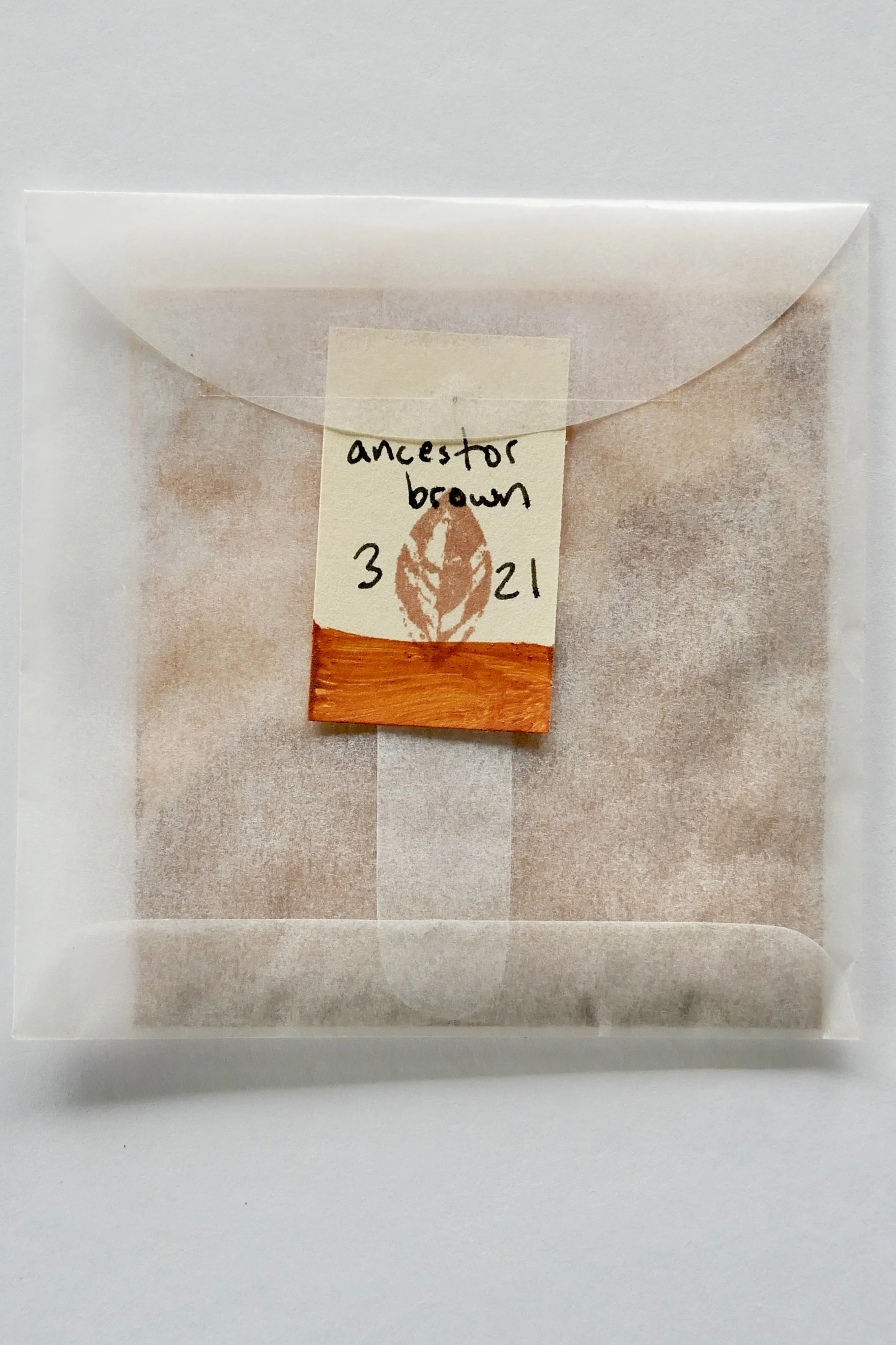ancestor brown : march ‘21
Created from the iron oxide rich soil from Jamaica’s largest parish, St Ann, when a small private road was built. The ochre was extracted using rainwater and the levigation method. The leftovers from the process were added to a plant waste compost, set to grow seedlings. The ochre site was a former colonial plantation dependent on the knowledge and skills of enslaved labour. The name is a tribute to the enslaved people who worked the land.
contributor : lucille junkere
Lucille is an artist, educator and textile researcher specializing in botanical and ochre pigments and embroidery. Her research focuses on the legacy of colonization in African Caribbean textile history, exploring loss, grief and cultural reconnection.
See more of Lucille’s work on her website lucillejunkere.com, or on instagram @lucillejunkere
Photo courtesy of Lucille Junkere
Photo courtesy of Lucille Junkere
22% donation recipient : A Jamaican Pigment Center
This month’s pigment contributor, Lucille Junkere, is in the early stages of developing a Pigment Center in Jamaica, currently called The Artisans Studios Jamaica. The center will be a space to share research, showcase pigments, and host workshops to enable the community to learn how to use pigments with access to equipment and a growing collection of books about pigments and related subjects. A dye garden is an important part of the project. The project location is the beautiful lush parish of St Catherine.
There’s still a long way to go and the project plan includes a number of different phases, including acquiring a shipping container to house the resource library and pigment collection with a covered outdoor space for workshops and study. Follow @lucillejunkere on Instagram for more info about fundraising for this project.




